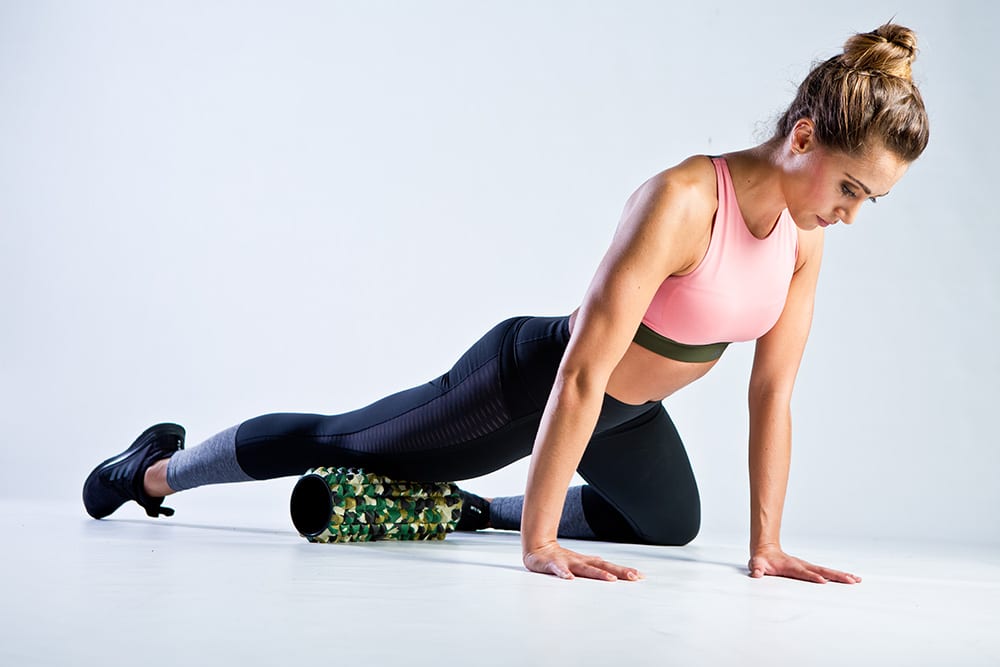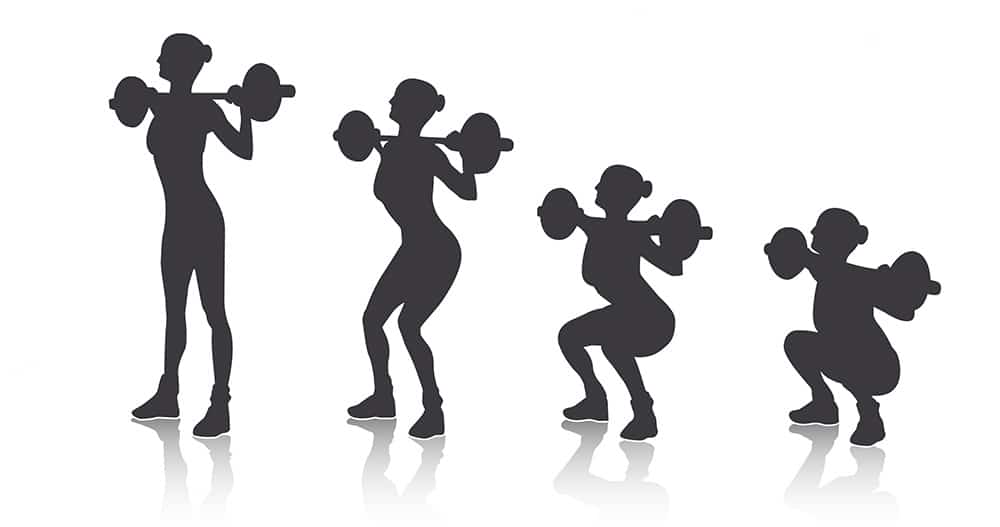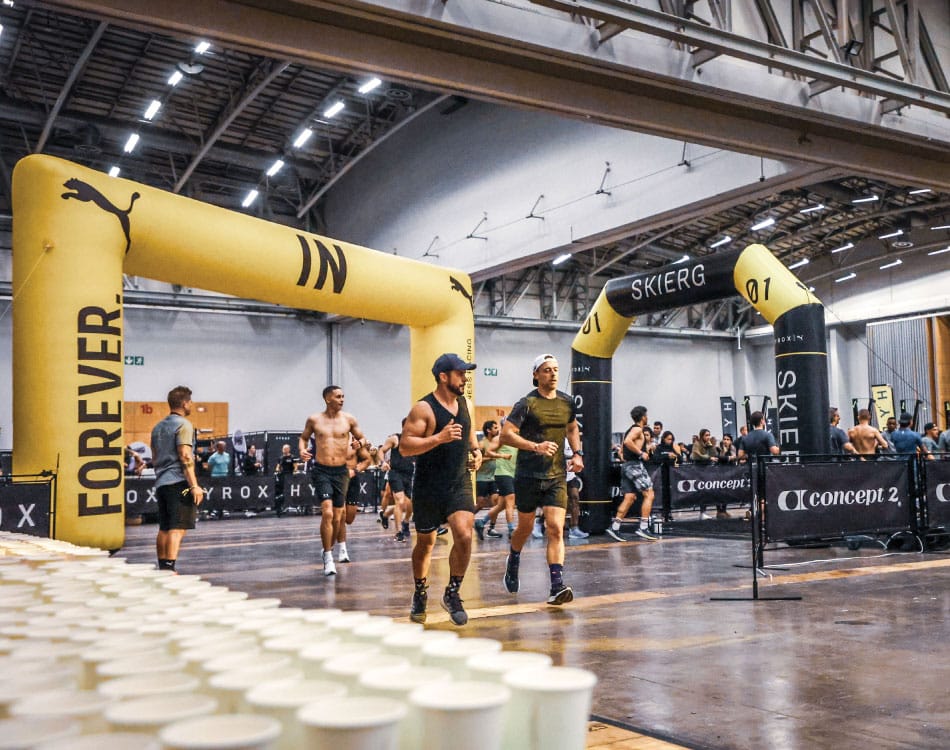An injury can take you out of action for weeks or even months, depending on its type and severity.
That’s why many active individuals prefer to take a proactive approach to injury prevention, rather than endure the onerous rigours of rehabilitation. If this approach appeals to you – and it should – then follow these guidelines to avoid injuries in the gym.
READ MORE | Why prevention is often better than cure
#1. Move more
Our predominantly sedentary modern lifestyle is often the root cause of our injury woes. Endless hours spent sitting at your desk, at home on the couch, or in your car weakens muscles and joint structures.
And when you load up weak musculoskeletal structures, which may also carry some degree of dysfunction, your injury risk rapidly rises, no matter how good your form is.
This tends to happen when we attempt to seamlessly transition from one extreme – hours spent sitting – to the next by jumping straight into an intense workout without an adequate warm-up.
This transition from inactivity to all-out effort is not conducive to soft, supple muscles, healthy connective tissues and mobile joints.
We therefore need to include periods of deliberate movement throughout a normal day, which will help maintain soft tissue – muscles, fascia, ligaments and tendons – and joint health and function.
This can include the following activities:
- Get up to walk around every 60 minutes. Setting an alarm on your watch, activity tracker or smartphone is best.
- Perform a hip mobility drill every time you stand up from a seated position to engage your glutes and stretch your hip flexors.
- Spend time working on soft tissue health while at home, ideally during periods when we would otherwise be inactive, like foam rolling or stretching while watching TV.
- Create opportunities to move more in everyday situations, like climbing the stairs instead of taking the lift or escalator.
READ MORE | 3 ways medium hyperbaric oxygen therapy benefits recovery from injury
#2. Warm up properly
Building on the first point, a thorough warm-up should precede every workout. Just 5-10 minutes of focused activity can prevent months spent sidelines with injury – it’s a small concession, relatively speaking.
Warming up prepares muscles, tendons and joints for the pending workout by promoting movement through a full and active range of motion, and a prepared body reduces injury risk.
Warming up also assists the circulatory system to pump oxygen-rich blood to working muscles. This makes muscles more pliable as ‘warm’ tissue saturated with blood becomes more elastic and is, therefore, better able to stretch and contract under force.
Every warm-up should include some light cardiovascular activity to promote peripheral blood flow (this gets the blood flowing to the legs and arms), followed by dynamic mobility drills and active stretching that targets the muscles and joints that you will engage during your workout.
READ MORE | Give your body the perfect ‘wake-up’ call before training
#3. Don’t ignore the signals
Matthew Proctor, an internationally-certified chiropractic sports practitioner based at the Sandton Sport & Family Chiropractic Clinic, says that dysfunction tends to build up over time and that pain is usually the final manifestation in this process.
“Many patients may harbour mechanical dysfunction that can result in injury without even knowing it. However, they only visit a specialist like a chiropractor when the pain presents or following an injury.”
In this regard, Johannesburg-based sports massage therapist and personal trainer, Ryan Taylor White, explains that regular massage sessions, for example, not only aid recovery but can also be a proactive means to uncover potential issues before they become problematic and clinical.
If more people took this proactive maintenance approach to effectively deal with mounting dysfunction before it results in acute injury, they would prevent many minor complications from developing into chronic conditions or injuries.
It can, therefore, be highly beneficial to periodically visit a chiropractor and a soft tissue treatment specialist such as a physiotherapist or sports massage therapist, even in the absence of pain or injury.
While many people might consider this an unnecessary expense, consider that it can cost significantly more to treat and rehabilitate a serious injury or chronic pain.
“There is no ideal frequency for proactive, preventative therapy sessions because requirements vary greatly among individuals. Various considerations include prevailing activity and fitness levels and strength, among others, which would all inform the recommended treatment frequency,” explains Proctor.
READ MORE | Treat the cause of injury, not the symptom to fully recover
#4. Promote healing and recovery
White adds that regular sports massage also improves circulation, which improves oxygenation within muscles and other tissues to aid recovery from training.
Sports massage also stimulates lymph drainage, increases range of motion and releases muscle tension to restore balance to the musculoskeletal system, which further aids recovery.
Maintenance or preventative sports massage usually happens on a regular basis and is aimed at keeping muscles flexible and supple. This is an important element in the fight against overuse injuries or overtraining, which are both common in those who engage in regular intense training.
It can also be useful to treat the early stages of tendinitis, as it and optimises natural healing mechanisms and addresses the wear and tear and inflammation that can predispose ligaments and tendons to injury.
“Sports massage is deeper and more focused, which reduces muscle stiffness and tension, and it is also a great stress reliever. All of these factors make it a suitable means to proactively manage your injury risk,” adds White.
The deep transverse friction from deep tissue massage can prevent or alleviate unwanted muscle adhesions.
Other techniques, such as myofascial release and trigger-point therapy, help to mobilise tissue to reduce trigger points and relieve tension states. Deep-friction massage applied to tendons can also induce fibroblast activity and generates new collagen, which can strengthen these tissues.
Additional ways that you can enhance recovery between hard training sessions include:
- Take adequate rest between training sessions to promote healing and ensure complete recovery.
- Ensure adequate protein intake to repair and rebuild damaged muscle tissue.
- Get adequate sleep to promote healing and tissue growth.
- Boost your intake of omega-3 essential fatty acids and vitamins A, C and E for their natural anti-inflammatory properties and immune-boosting benefits (your immune system is responsible for recovery).
- Drink sufficient water to keep tissues hydrated, which ensures optimal function.
- Incorporate additional tools to reduce or manage localised or systemic inflammation, like avoiding pro-inflammatory foods and other substances.
- Use contrast therapy by alternating hot and cold shower applications, or combine saunas with ice bath immersions.
- Supplement with calcium, magnesium, zinc, collagen and co-enzyme Q10 to aid connective tissues and muscle repair.
READ MORE | 5 ways you’re fast-tracking injury
#5. Become a stickler for form
Mastering technique not only helps you lift more weight to achieve better results, but it also reduces your injury risk.
Poor technique can shift the stress onto accessory or stabiliser muscles that aren’t designed or strong enough to handle the load, which can result in traumatic injuries like ruptures, tears or stress fractures.
Using poor form over prolonged periods can also increase the wear and tear on muscles, connective tissues and joints. The resultant damage accumulates over time, eventually manifesting as chronic conditions such as tendinitis or muscle weaknesses or imbalances.
Adopting strict form requires the right platform, which means first developing the requisite mobility in your major joint structures like your hips and shoulders, and the required flexibility and strength in muscles to properly and safely execute movements under load.
Once you’ve established this foundation, you can learn the correct movement pattern with online tutorials or from a qualified fitness professional or experienced lifter.
Proper technique entails activating the appropriate muscles in the correct sequence while ensuring biomechanical alignment through natural movement patterns.




















